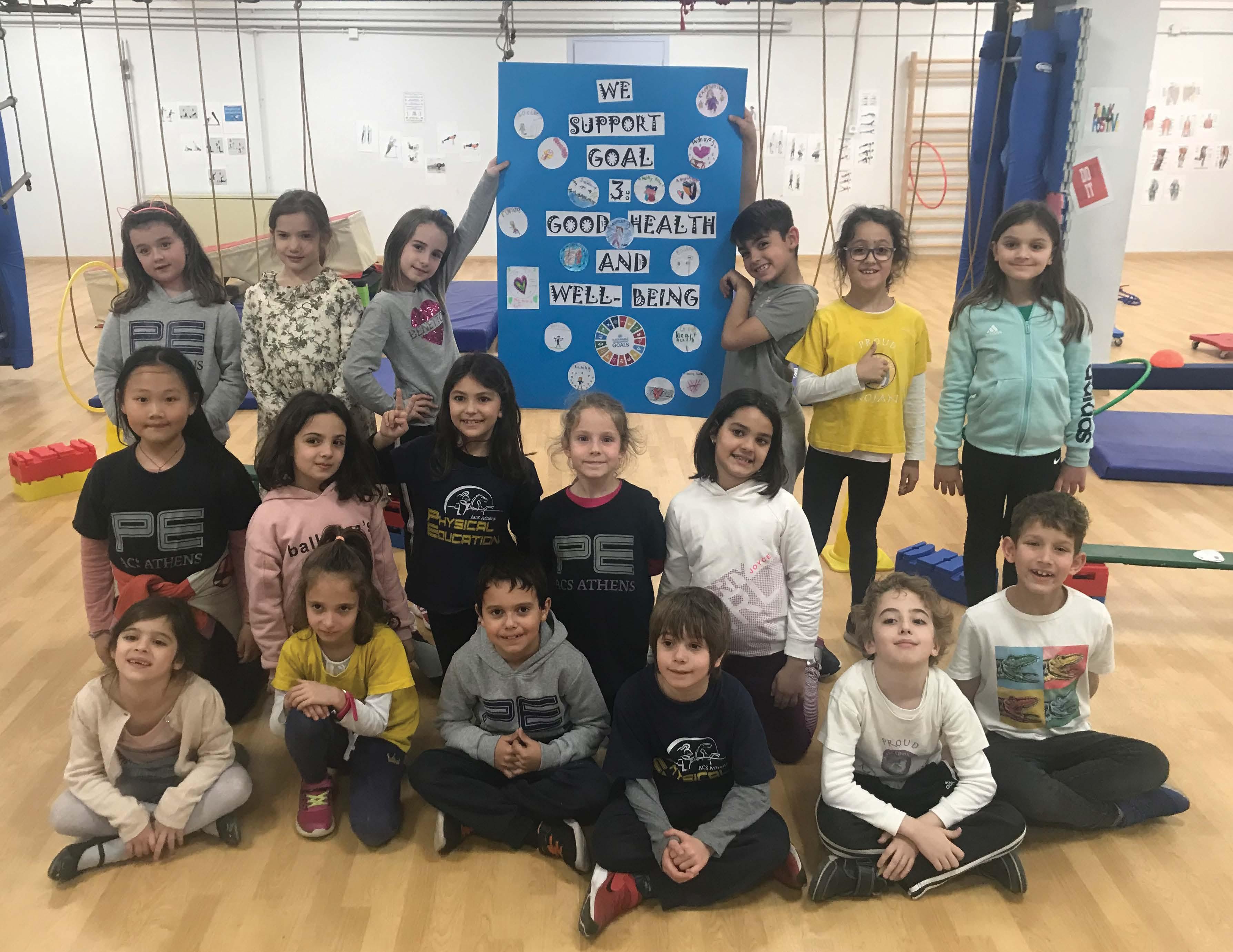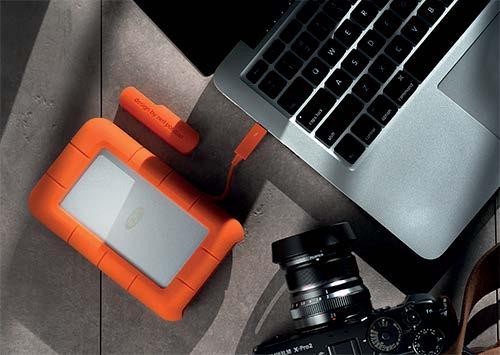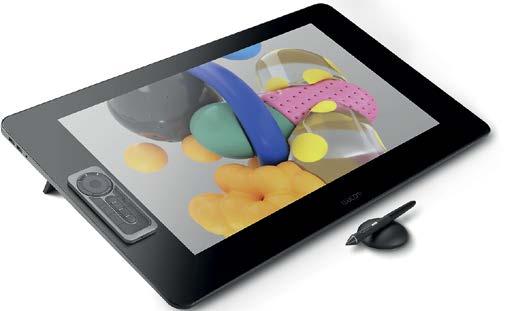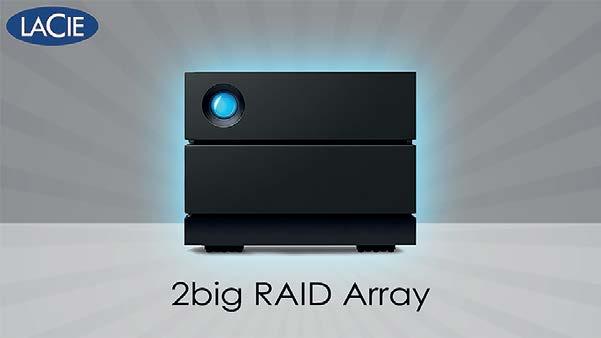
11 minute read
Forming Active World Citizens Through the SDGs

by Christina Venos, Elementary School Faculty
“Mom, my teacher has given me a purpose to learn.” What teacher wouldn’t love to overhear these words? Dr. Pelonis has inspired me to integrate the Sustainable Development Goals (SDGs) into the 2nd-grade curriculum. After introducing the idea of teaching with the SDGs into our school, she asked the faculty, “Why do you teach? What is your reason for doing all that you do?”
I immediately thought of an answer, but then she said, “This may take some reflection,” and I reviewed that maybe my answer came too quick. I spent days and weeks thinking about her question, but my answer did not change. I was sure that I didn’t think of my answer too fast. Teaching is what I was born to do. The reason I teach is simple: Teaching feels natural, and I love helping children find their purpose to learn. When students have a purpose, they take responsibility for their learning, they begin to want to learn. When they find excitement in the learning process, they take their knowledge to new levels. This experience marked the start of what would turn out to be a beautiful year, despite all its challenges.
Initially, teaching my students about the SDGs was not easy. It was something new, but I knew this challenge would be worth it. I knew it would change me as an educator, and my students as learners. I just hadn’t figured out the “how” yet. I spent endless hours deciding on the best approach to integrate the SDGs into our curriculum. I decided that before introducing the SDGs, I would use a growth mindset approach to allow for a mind-shift. We spent the first couple of months fully engaged in a growth mindset. My students started building a new awareness about risk and failure: that taking risks and failing is not only encouraged but also an integral part of the learning process. They began considering what it meant to be our best selves each and every day.
We would start each day with the question, “How can I be a better person today than I was yesterday?” Each morning, we took time to reflect on how we can each do better, whether it is big or small. My students started realizing that when they focus on themselves as learners, they become happier learners. Our classroom was filled with a community of happy learners. This further sparked our empathy toward each other, understanding and accepting that we each have things to work on and that each of us has our personal goals. Once they started working on and reaching their goals, we discussed what it meant to be a role model in the classroom. Being a role model means that while we work on our own goals, we can also help those around us work on theirs, in subtle ways. “What does that mean?” they asked. Well, that means that if a friend’s goal is to raise their hand before they talk, maybe when you are around them, you can remember to raise your hand and remind them of that good choice. Maybe, you can give them a soft reminder, “Remember to raise your hand, it is your goal.” Achieving goals and helping those around us achieve goals takes immense practice, but eventually, I had a classroom filled with students helping each other. And they were doing it just for the good if it! They were not receiving anything for helping each other, except for an internal reward. An internal reward is the feeling you get when you do something good without expecting a material reward in return. This idea of internal rewards comes from the book “How to Fill a Bucket.” We took some time to reflect on these moments of helping others. The consensus was that when you help someone, it makes you feel good too. That being said, empathy was established in our classroom as a whole, but also in each individual student.
Once all of the above was put into practice, I knew it was time to introduce the SDGs. One of the units for 2nd grade is Communities. We discuss the different kinds of communities, the people who make up these communities, and what it means to be a citizen of the different types of communities. After these discussions, I introduced the term “world citizen.” We discussed that we are all citizens of our town, school, and country, but what about the world? Do we all live on this planet? Yes, we do! That means we are world citizens, and everyone living on this planet is a world citizen! If we are all citizens together, we all have to help each other, just like we do in our classroom! I asked them, “Are we all citizens of our classroom?” They all yelled, “YES!” “Do we make our own goals?” “YES!” “Do you help others with their goals?” “YES!” This was my “aha moment.” So I asked, “Did you know that

Integrating the SDGs with P.E. and making a plan to raise awareness on Goal 3: Good Health & Well-Being
our planet has goals?” The kids stopped and stared at me. “What do you mean the planet has goals?” Well, our planet has a lot of things to work on. A special organization called the United Nations has put together 17 goals for world citizens to work on! “Are you a world citizen?” “Yes! Can we work on these goals too?” They were already so excited without even knowing what the goals were! So, at that moment, we took some time to discuss all the 17 goals. We read about them, we watched videos, we had discussions, and we started brainstorming! I asked them one question over and over, “Why is it important for us to help achieve these goals?” The answers poured in:
“Because we are world citizens!”
“Because this is our planet, we all have to help”
“Well that is easy, we help each other in the classroom, why wouldn’t we help the world with its goals?”
And the answer that struck me the most;
“Because if we help others, we help ourselves become the best self we can be!”
Without a doubt, this was our special moment.

tainability. We took the time to understand well what sustainability means and that offering money is not always the answer. I asked them again to brainstorm ideas to help our world, non-monetarily. After much discussion, we decided on one extraordinary project. It was called “Organization Happyness.” Yes, happiness is spelled wrong, but this is how they spelled it, and this, I thought, was most meaningful. They said that our organization mission was “Everyone deserves to be happy, so we are here to create sustainable happiness the best we can.”
They decided on the goal of Quality Education. They said that if we provide education to others, all of the other goals could be met because knowledge is something no one can take away from you. Our project was creating books for children who do not receive a proper education. We dedicated each Friday to making books. The students made books about math skills, phonics skills, the ABCs, science topics, and much more. I was amazed with all of my authors! It was an inspiration for us all. They said they wanted the whole school involved. We began a plan to campaign in each classroom in the school. They said they wanted the community involved, so we made a plan to campaign to parents, to other schools, and I even partnered with some schools in the United States so that they could join in our project and purpose! Our goal was to create 1000 books!
All of a sudden, the pandemic hit. Alongside all the unanticipated devastation, our project would have to come to a temporary halt. The students started to worry about their project. “Ms. Venos, now what will we do? How will those kids learn?” My heart broke. I was not sure what to do. This was already a new kind of learning in our classroom, but now to take it and turn it into a virtual learning experience was a daunting idea. After much thought, I decided that it would not be fair for these students who worked so hard and were so inspired by this experience to just let it go. “We will do this,” I thought! Maybe we will do this differently, but we will do this so that these students understand that they can make a difference, that they can help our world, and that even when we face challenges, we can use our growth mindset and overcome them. What an experience this turned out to be! With the help and support of my fellow 2nd-grade educators, Ms. Klimou and Ms. Lamprou, even amid all the changes we were going through, we put our team powers together and created a new project for the students: one that would integrate all core subjects and allow them to truly become architects of their own learning.
The project was based on STEAM: to create an action plan for an invention or idea that could help support one of the SDGs. Brilliantly, they took off with this! They were extremely thrilled. We incorporated the project with a Dr. Seuss unit we already had in place. Dr. Seuss’ books easily connect with the SDGs. After our Dr. Seuss unit, we asked the students to decide on a book or goal they were passionate about and to connect them. Once this was in place, they were to write opinion pieces about their goal and book: “How do they connect? and “Why is this goal important?” They gave examples and reasons in support of their personal opinions. We went through the writing process together, virtually! In whole groups, small groups, and one-on-one sessions. It was exhausting but well worth every moment spent. They were then asked to go through the design process thinking model that we had been working on throughout the year. Because of their familiarity with both STEAM and design process thinking, this task was easily accomplished. They all came up with inventions or ideas. We spent time discussing how these inventions or ideas would work, what challenges would need to be faced, and lastly, and most importantly, how they would share them with the world. They decided on making slides, videos, apps, and mini-trailers to share their action plans! Some ideas included,

making an ACS Athens club to raise awareness, along with a logo,
creating a UN playground to educate children about each goal with hands-on experiences at each station, such as planting trees, making a garden, and building projects out of recycled items.
One student stated that we could feed morepeople if we had more gardens. She took this idea and created a movie about the importance of Zero Hunger and how we can help!
Teachers talk about proud teacher moments. Well, this undoubtedly surpassed that for me! We set a day to have an exhibition of learning to share their hard work. Parents, families, teachers, administrators, and other students came together virtually to see the presentations. This was an inspiration for us adults, and, more so, for the students! I have never, in all my years of teaching, seen more actively engaged students in their learning. They did not want to stop! I knew that all the hard work put in to complete our SDGs virtually was worth every moment spent. Some of their words have left a forever imprint on my heart as an educator:
One student stated, “ a special child named Malala once said “one child, one pencil, one teacher, one book, and one pen can change the world.” but I will add “and one video on Zero Hunger can change the world! Let’s be that change.”

Another student said, “The journey is not over here; keep on dreaming and making!” In conclusion, this experience helped us all grow. I was reminded of the importance of instilling purpose into our students’ learning process. Integrating the SDGs into our core subjects allowed us to meet our school standards and objectives. More importantly, it helped us form active learners: learners who want to keep learning no matter how challenging something is and learners who use their knowledge to create sustainability for our future. Throughout this whole process, I never had one student come to me and say, “I can’t.” I owe this to three things: the growth mindset approach, STEAM through design time, and the empathy that was generated. The kids did not want to give up, because they said, “If we give up, then how will we meet the planet goals? We do not give up on our own goals, so we will not give up on the Sustainable Development Goals either. Together, we are active world citizens!”










